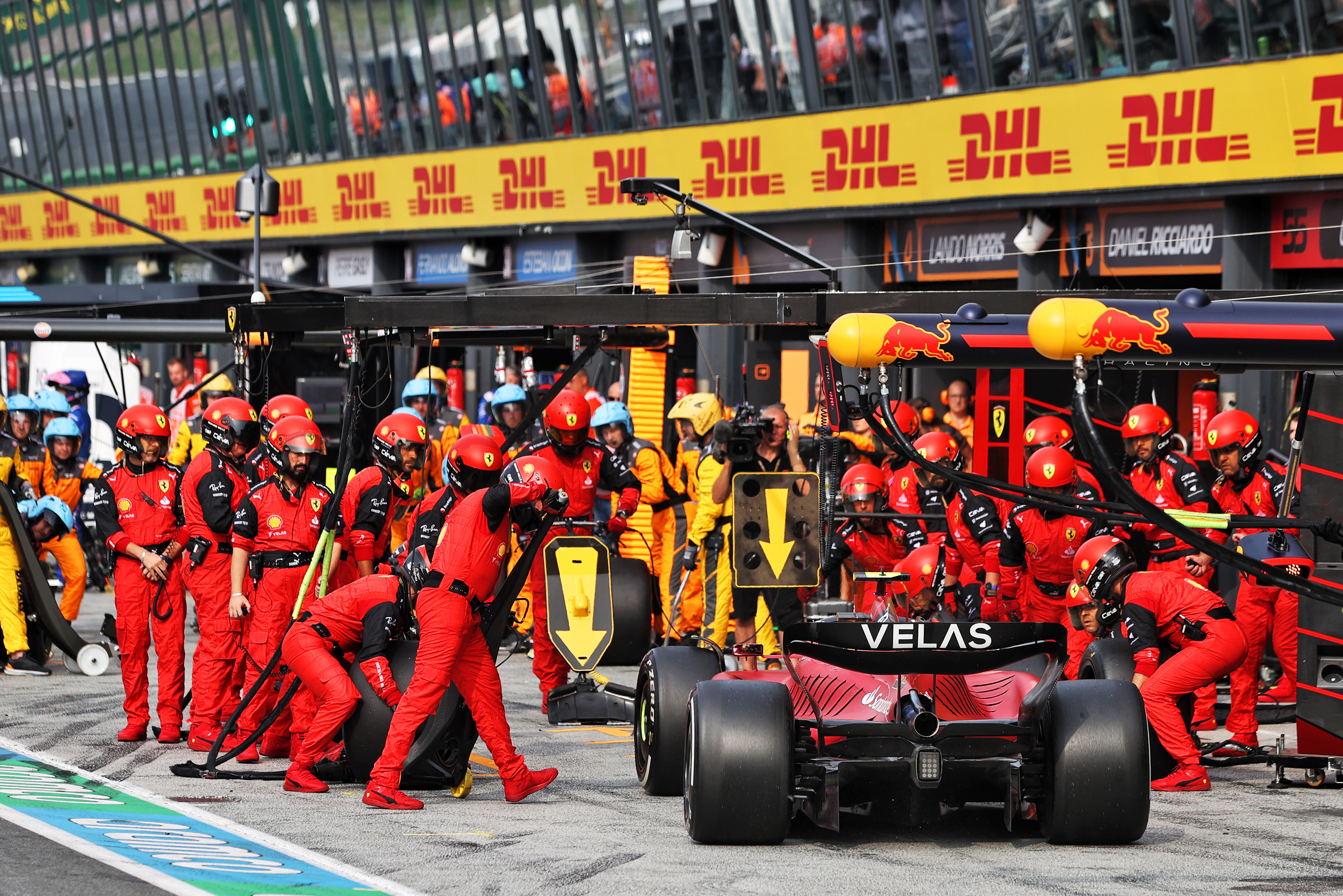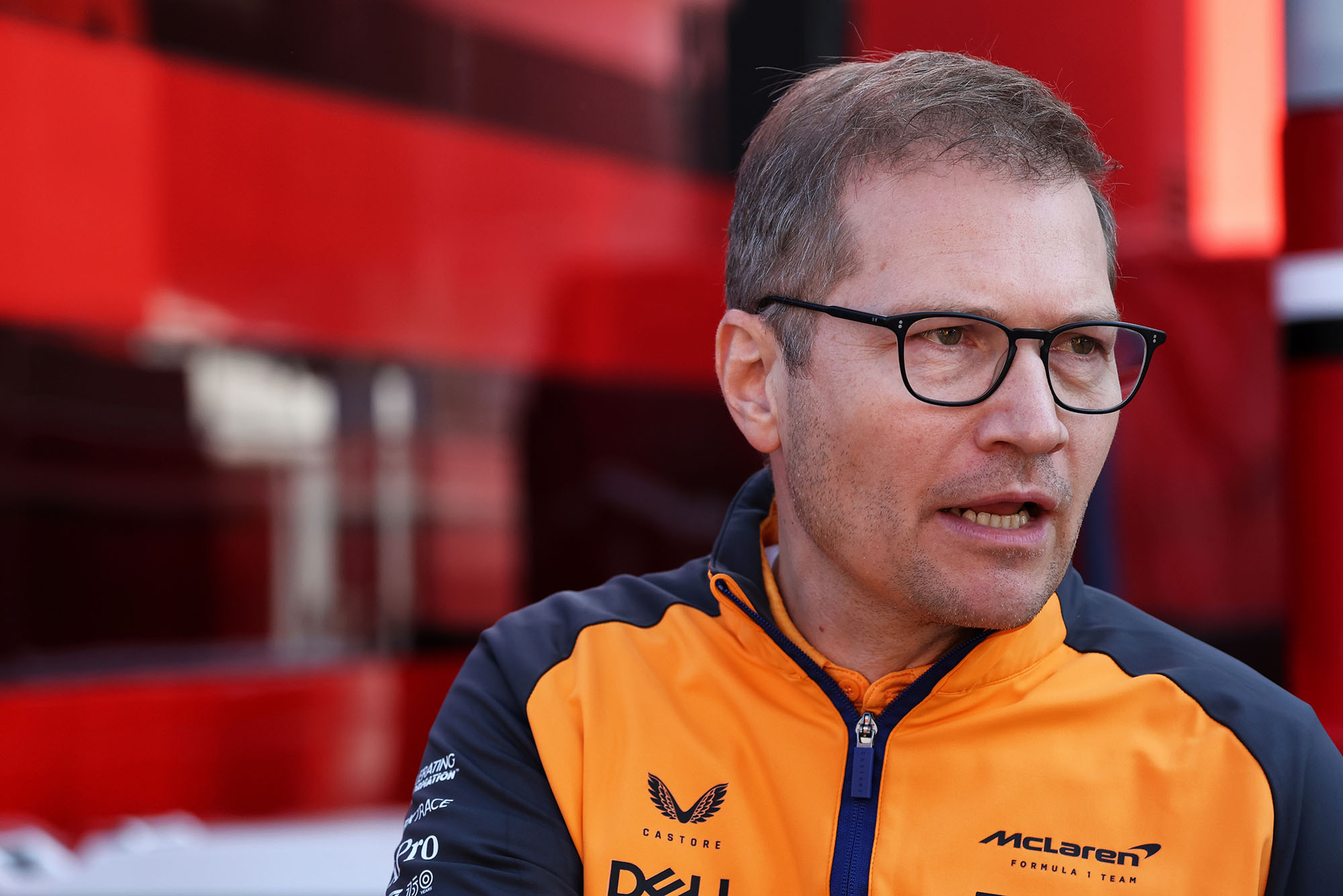Up Next

Ferrari team principal Mattia Binotto has criticised the penalty Carlos Sainz was hit with for an unsafe release as “very harsh”, arguing that both the car’s release and the way it was driven to avoid endangering the McLaren pitcrew were safe.
Sainz was hit with a five-second penalty for the unsafe release at his final pitstop on lap 57 after he pulled out of his pitbox into the path of Fernando Alonso’s Alpine. The time penalty was applied at the chequered flag, relegating Sainz from fifth on the road to eighth behind Sergio Perez, Fernando Alonso and Lando Norris in the results.
The pitstop took place under safety car conditions at a point where the whole field had to run through the pitlane while Valtteri Bottas’s Alfa Romeo was being recovered after parking on the start/finish straight.
Binotto argued that the car was released at a safe moment, but that the need for Sainz to avoid the McLaren pitcrew that was servicing Lando Norris’s car led to him taking longer than expected to pull into the fast lane in the narrow Zandvoort pits. By the time he did, Alonso had arrived.
“The five-second penalty, which cost Carlos quite a lot, honestly I feel that the decision of the FIA was very, very harsh,” said Binotto.
“A car was passing through and we held Carlos in the pit position because we knew it would be unsafe to release at the time. We waited to have the space, and the space was there with the Alpine coming so that’s why we released him.
“What happened after is that he had to slow down, almost to stop, because the pit crew of McLaren was going around their car. And in order to be safe with the mechanics, he almost stopped. He had an anti-stall coming in and that lost him time.
“The release was not unsafe, the release was safe, the way that Carlos [drove] was safe. That’s why I think the decision was harsh.”
Sainz agreed that the release was safe and blamed the need on having to brake to avoid risking injuring a McLaren mechanic.

He described this as “avoiding action” and said he would raise his concerns with the FIA about being hit with a penalty for what he considered safe driving.
“The unsafe release wasn’t an unsafe release,” said Sainz.
“I was launching into the pitlane correctly. The problem was that I had to brake to avoid taking a McLaren mechanic out of this life.
“If for taking avoiding action they give you a penalty, I find it very frustrating.
“I’m going to speak with the FIA now, because I don’t understand the decision.”
The Zandvoort pitlane is unusually tight, with the lower speed limit of 60km/h in force during the race.
But McLaren team principal Andreas Seidl described the tight confines of the pitlane as part of the challenge and that there are times when teams have to accept they will lose time thanks to having to delay a release.
“It’s a tight pitlane, which obviously brings some challenges,” said Seidl when asked by The Race about the tightness of the pitlane and Ferrari’s argument that its release was safe, but that Sainz impeded Alonso because he took avoiding action.
“But at the same time, all other teams managed well today with nothing happening.

“Of course, this brings a bit of uncertainty into the game, this tight pitlane, because you might end up having pitstops that are a bit slower than other cars that, for example, are lucky and have a pitstop without anyone around. But it’s part of the challenge.”
Sainz also lost time at his first pitstop thanks to a delay of just over 10-seconds caused by the left-rear wheel being late arriving. Binotto blamed this on the team calling him in too late for the pit crew to get set.
Sainz stopped on lap 14 having run third but under pressure from Mercedes driver Lewis Hamilton in the first stint.
Ferrari then responded to seeing the Mercedes spit crew preparing for an apparent pitstop, which led to Sainz being called in at the last moment to cover off the undercut.
However, the rear-left was not ready, leading to significant time loss and meaning Sainz rejoined in 11th. As a result, Red Bull driver Sergio Perez, who made a pitstop in the bay behind, drove over an unattended Ferrari wheelgun when he was released.
“We knew that Lewis was preparing himself for the pitstop and could have undercut us, we saw the pit crew of Mercedes out in the pitlane and we knew he would stop,” said Binotto.
“So we tried to react, simply to stay ahead of him. It was the best way to keep that position because we knew that Lewis was very fast in the first stint of the race.
“When we saw the pit crew of Mercedes, we called our driver in but that was when he was in the last corners and too late for the mechanics to be ready. So it has been too late as a call.
“In our race preparation, we normally know by when the last time and the last corner [gives enough warning] for the mechanics. But it was a requirement of track position so it was a too late call [based on] on our judgement prior to the race.”






